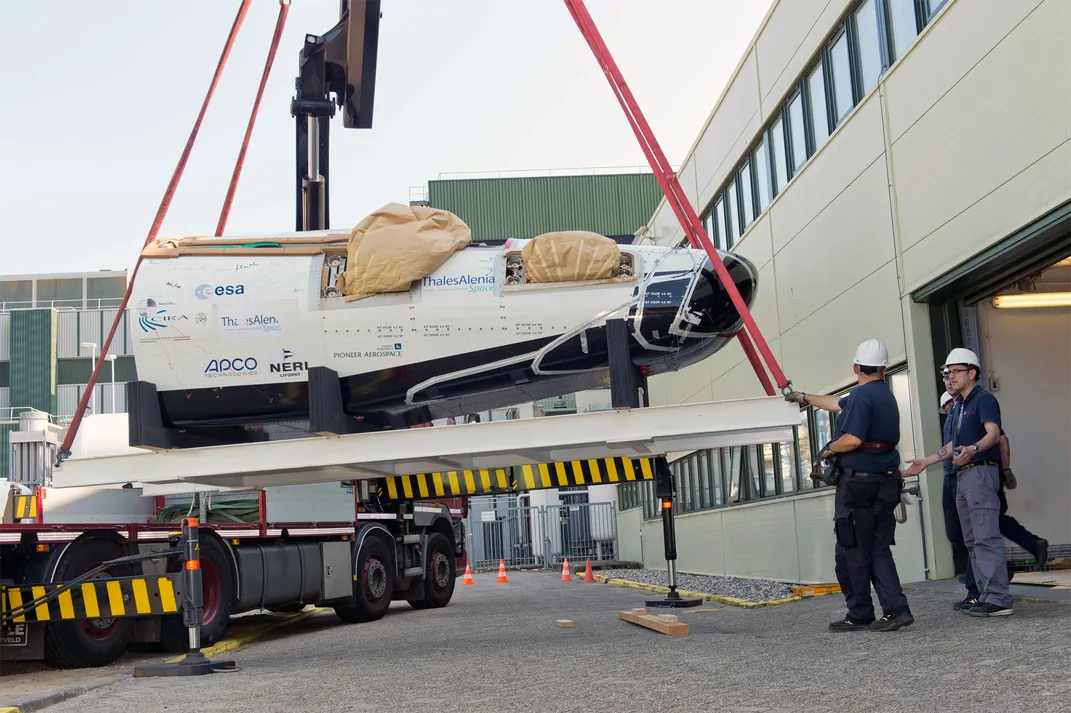Europe’s Proto-Spaceplane Gets Ready To Fly
The IXV will pave the way for future reusable spacecraft.
/https://tf-cmsv2-smithsonianmag-media.s3.amazonaws.com/filer/16/e1/16e10279-727e-4116-b69c-1ee83b559192/artist_impression_of_esa_s_intermediate_experimental_vehicle_ixv.jpg)
Europe is getting into the reusable spaceplane business.
The European Space Agency’s Intermediate eXperimental Vehicle (IXV) is on schedule for a November 18 launch from Kourou, French Guiana, aboard a Vega rocket. The launch will be suborbital, meaning the car-size vehicle will only do about half an orbit around Earth before plunging back into the ocean. And that’s all it was designed to do.
IXV is just a test bed, a one-off experiment designed to evaluate technologies—including a new heat shield system—for future use in ESA’s ‘Programme for Reusable In-orbit Demonstrator in Europe,’ or PRIDE.
That program—to develop a small, reusable, unmanned spaceplane—was given the go-ahead in 2012, with a first flight tentatively scheduled for 2018. If it goes ahead as planned, the larger PRIDE vehicle would shuttle sensors, scientific experiments and whatever else fits inside its cargo bay to orbit and back. Reusable craft are the holy grail of spaceflight because they potentially make spaceflight cheaper. That was the original philosophy behind the U.S. space shuttle, before NASA’s vehicles proved enormously expensive to refurbish after each mission. The technologies tested on the IXV, including a new tile system to dissipate the heat of atmospheric reentry, are intended to make refurbishment cheaper.

The U.S. currently has the lead in the small, reusable spaceplane field with the Boeing X-37, an ex-NASA program that now flies into space for the Department of Defense, spending a year or two at a time in orbit before landing gently on a runway. Just what X-37 carries to space and back is classified, but Air Force officials routinely sing its praises.
Weighing in at 11,000 pounds, the X-37 requires a huge, expensive Atlas V rocket to get into space. The Vega rocket used to launch the IXV (and eventually PRIDE) is Europe’s smallest launcher, with a maximum capacity of 3,300 pounds.
Here’s an ESA preview of the IXV’s planned suborbital test.